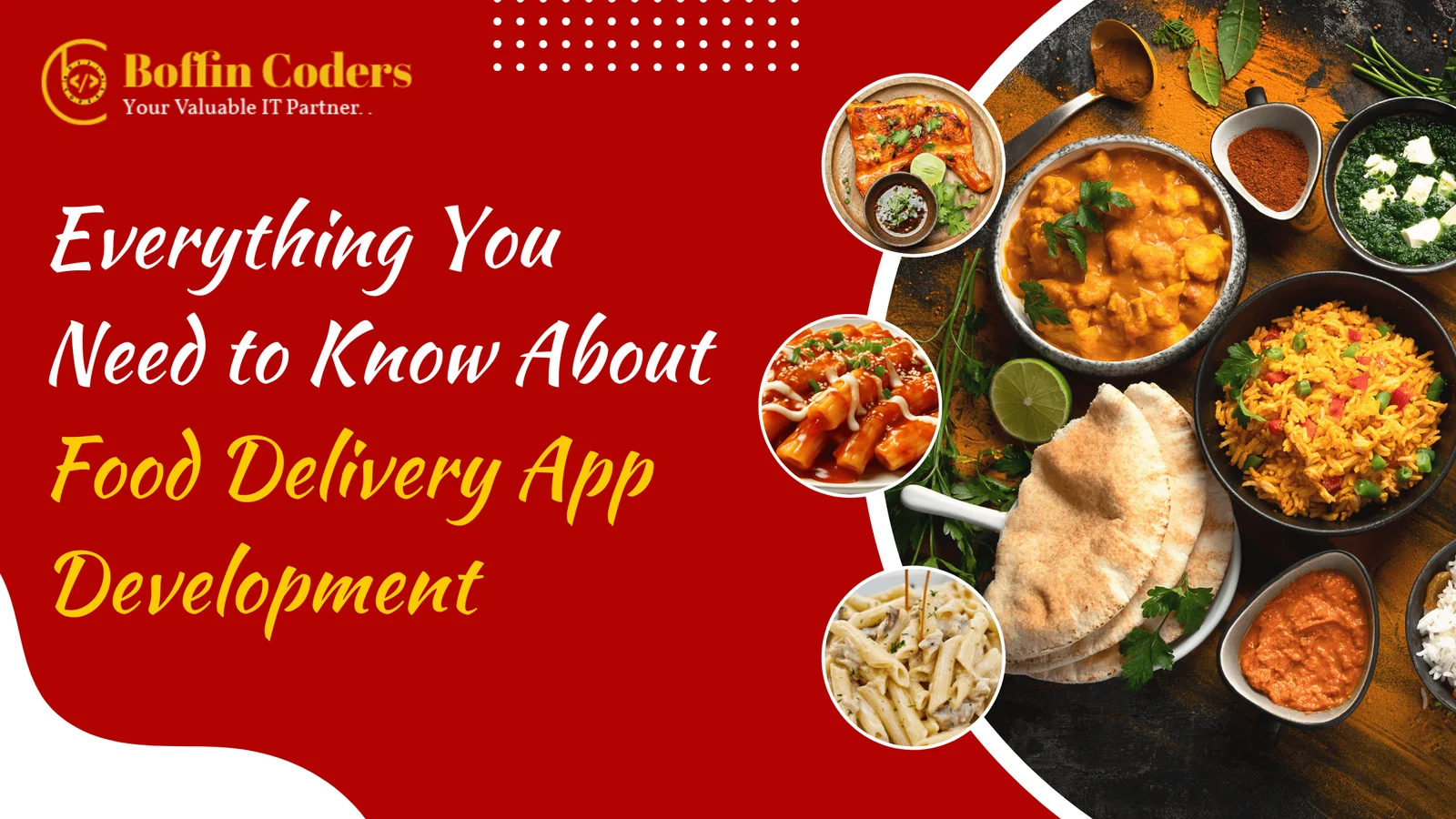Introduction
In the fast-paced world, we live in, where time is of the essence, food delivery apps have become a lifeline for numerous. Whether you are pining for a hearty mess after a long day at work or hosting a last-nanosecond gathering, these apps have made it incredibly accessible to enjoy a wide array of cookeries at your doorstep. Ever wondered what goes into creating these flawless platforms? Join us as we explore everything you need to know about food delivery app development, demystifying the process for you.
Understanding the Boom
The rise of food delivery apps can be attributed to the perfect mix of convenience, variety, and technology. With the valve of a cutlet, users can browse through a plethora of cafes, choose their favorite dishes, and have them delivered right to their doorstep. This paradigm shift in the way we order food has opened up a world of openings for businesses and developers alike.
Key Features of the Food Delivery App Development
1. User-Friendly Interface: The cornerstone of any successful food delivery app is a user-friendly interface. From effortless navigation to a visually appealing design, ensuring that users can easily browse, select, and order their favorite meals is paramount.
2. Real-Time Order Tracking: The anticipation of a delicious meal is heightened when users can track their orders in real-time. Implementing a robust tracking system provides transparency and keeps users informed about the status of their orders, enhancing their overall experience.
3. Secure Payment Gateway Integration: Trust is crucial in online transactions. Integrating secure payment gateways ensures that users can complete transactions safely and conveniently, fostering confidence in the app and encouraging repeat business.
4. Customization Options: Recognizing that every user has unique preferences, successful food delivery apps offer customization options. From choosing spice levels to dietary restrictions, allowing users to tailor their orders adds a personalized touch to the ordering process.
5. Efficient Search and Filters: With an extensive array of restaurants and cuisines, an efficient search and filter system is a must. Users should be able to easily find their desired options based on cuisine type, price range, or specific dishes.
6. Push Notifications: Keeping users engaged is made easier with push notifications. From order confirmations to exclusive deals, timely notifications enhance user experience and contribute to increased customer loyalty.
7. Multi-Platform Compatibility: In a world where users switch between devices seamlessly, ensuring multi-platform compatibility is essential. A food delivery app that functions seamlessly across smartphones, tablets, and desktops provides a consistent user experience.
8. Rating and Review System: Transparency is key in the world of food delivery. Implementing a rating and review system allows users to share their experiences, helping others make informed decisions and providing valuable feedback for restaurants.
9. Inventory Management for Restaurants: To streamline the order fulfillment process, a robust inventory management system is necessary. This ensures that restaurants can efficiently manage their stock and update menu availability in real time.
10. Customer Support and Feedback Mechanism: A responsive customer support system and a feedback mechanism are essential for addressing user queries and continuously improving the app. Quick resolution of issues and actively seeking user feedback contribute to a positive overall experience.
Statistical Facts about the Food Delivery App
1. The online food delivery market is poised for explosive growth, with projected revenue reaching US$1 trillion in 2023 and a staggering US$2 trillion by 2027. This rapid expansion is fueled by a combination of factors, including increasing urbanization, rising disposable incomes, and the growing popularity of smartphones.
2. Grocery delivery is expected to be a key driver of this growth, with an anticipated revenue increase of 22.2% by 2024. This surge in demand is attributed to the convenience and time savings that grocery delivery services offer, particularly for busy urban dwellers.
3. The meal delivery segment is also expected to witness significant growth, with the number of users projected to reach 2.5 billion by 2027. This growth is driven by the desire for healthier, more convenient meal options, especially among younger demographics.
4. The United States is currently the largest online food delivery market, generating a staggering 218 billion USD in revenue from the delivery segment in 2023. Of this, 76 billion USD came from the meal delivery sector alone. These figures are expected to skyrocket to 500 billion USD by 2027, highlighting the immense potential of this market.
5. In 2024, the revenue of the platform-to-consumer delivery segment worldwide is projected to reach a remarkable 96,864.4 million USD. This indicates the dominance of platform-to-consumer delivery models, where companies like DoorDash and Uber Eats connect consumers directly with restaurants.
Why Food Delivery App is so Popular
1. Convenience: Food delivery apps offer unparalleled convenience, allowing users to enjoy a variety of cuisines from the comfort of their homes without the need to cook or dine out.
2. Time-Saving: With a few taps on a smartphone, users can save valuable time that would otherwise be spent preparing meals or traveling to a restaurant. Quick and efficient service is a major draw.
3. Wide Variety of Choices: Food delivery apps provide access to a diverse range of restaurants and cuisines, giving users the freedom to explore and try different dishes without limitations.
4. Real-Time Tracking: The ability to track the delivery progress in real-time adds transparency and assurance to the process, reducing uncertainty and enhancing the overall user experience.
5. Special Discounts and Offers: Many food delivery apps provide exclusive discounts, promotions, and loyalty programs, making them financially appealing for users and encouraging repeat orders.
6. Contactless Transactions: Especially relevant in today’s health-conscious environment, food delivery apps facilitate contactless transactions, minimizing physical interactions and promoting safety.
7. User Reviews and Ratings: The presence of user reviews and ratings on these platforms helps customers make informed decisions, fostering a sense of trust and reliability in the quality of the food and service.
8. Personalization Options: Food delivery apps often allow users to customize their orders, catering to individual preferences and dietary restrictions, creating a personalized and satisfying dining experience.
9. 24/7 Availability: The round-the-clock availability of food delivery services caters to different schedules, accommodating late-night cravings or busy days when cooking may not be feasible.
10. Efficient Order Management: For restaurants, food delivery apps streamline the order management process, providing a centralized platform for efficiently handling incoming orders, reducing errors, and improving overall efficiency.
Top Food Delivery Applications
1. Uber
2. Zomato
3. Toast Takeout
4. Grubhub
5. DoorDash
6. Eat 24
7. Postmates
8. Seamless
9. Caviar
10. Delivery.com
For more detailed information about the top food delivery apps, check out this blog 👉 Top 20 Profitable Online Food Delivery Apps in the World
Factor Affecting Cost of Food Delivery App Development
1. App Complexity: The complexity of the app, including features like real-time tracking, payment gateways, and personalized user experiences, significantly influences development costs. More advanced functionalities generally require more resources and time.
2. Platform (iOS, Android, or Both): Developing the app for a single platform, such as iOS or Android, is generally more cost-effective than creating a cross-platform app. The choice of platforms impacts development time, costs, and overall user reach.
3. Design and User Interface: The intricacy of the app’s design and user interface contributes to development costs. A visually appealing and user-friendly interface often requires more time and effort in both design and development.
4. Customization and Features: The level of customization and additional features, such as in-app chat support, loyalty programs, or augmented reality features, can significantly impact costs. More features and unique elements generally increase development expenses.
5. Integration with Third-Party Services: If the app integrates with external services like payment gateways, map services, or restaurant POS systems, the complexity and costs can rise. Ensuring seamless communication with external services adds to the development effort.
6. Geographical Scope: The geographical scope of the app, including the number of cities or countries it will serve, affects the complexity of the development process. Adapting the app to various locations may require additional features and considerations, impacting costs.
7. Security Measures: Implementing robust security measures to protect user data and ensure safe transactions adds to development costs. Security features, such as encryption and secure authentication, are essential for building trust with users.
8. Regulatory Compliance: Adhering to regional regulations, especially in the food industry, may involve additional development work. Ensuring the app complies with data protection laws and food safety standards can impact both time and costs.
9. Testing and Quality Assurance: Rigorous testing to identify and fix bugs, ensure smooth functionality, and provide a seamless user experience is crucial. The more comprehensive the testing process, the more resources and time it consumes, affecting overall development costs.
10. Maintenance and Updates: Continuous maintenance and updates to keep the app compatible with new operating systems, resolve issues, and introduce new features contribute to the overall cost. Regular updates are essential for keeping the app competitive and user-friendly.
Conclusion
Embarking on food delivery app development is an exciting journey, promising a world of opportunities. Whether you’re a startup or an established business, partnering with a reputable food delivery app development company is crucial. For expert guidance and development services, contact Boffin Coders, your trusted partner in food delivery app development. Let’s turn your ideas into a successful and user-friendly app!

As a blog author, I have a strong passion for staying up-to-date with the latest trends and technologies. My expertise lies in WordPress development, SEO optimization, and content writing. Whether you have an idea for a website, mobile app, or custom software, our team is here to guide you. Get a free consultationwith us. Additionally, I am available to provide the best SEO and content writing services to boost your online presence.

